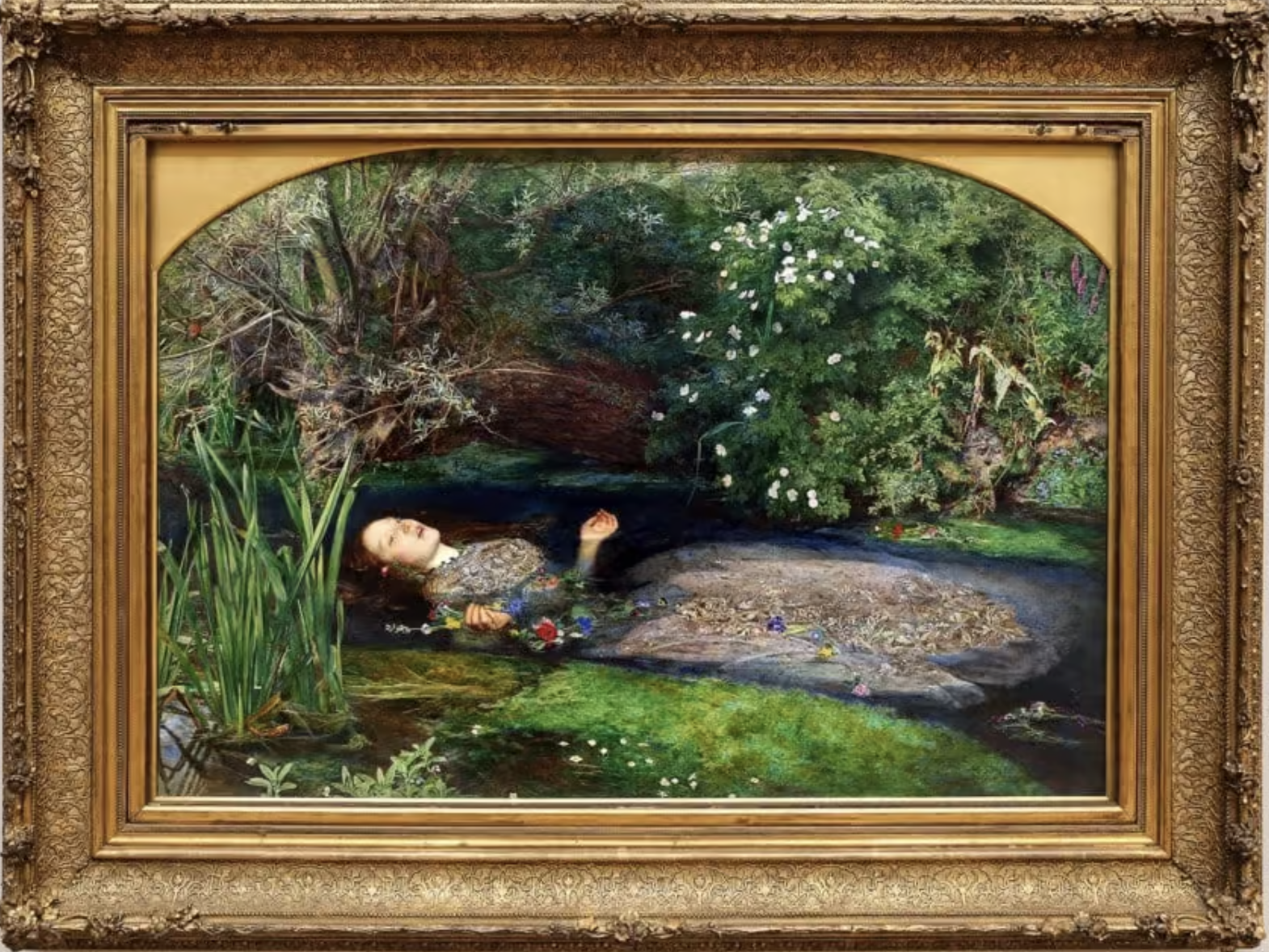In this page we’ll walk through the painting’s history, its symbolism, and why its image still resonates today.
A Pre-Raphaelite Masterpiece
Let’s dive into Ophelia, painted by Sir John Everett Millais in 1851-2. One of the most famous images of Elizabeth Siddal – it’s a stunning example of Pre-Raphaelite art, known for its faithful botanical precision and the delicate beauty of Hamlet’s young ingenue.
Millais chose to depict the moment described in Shakespeare’s verse—Ophelia floating down the river, singing her final song.
Queen Gertrude
There is a willow grows askant the brook
That shows his hoar leaves in the glassy stream.
Therewith fantastic garlands did she make
Of crowflowers, nettles, daisies, and long purples,
That liberal shepherds give a grosser name,
But our cold maids do “dead men’s fingers” call them.
There on the pendant boughs her coronet weeds
Clamb’ring to hang, an envious sliver broke,
When down her weedy trophies and herself
Fell in the weeping brook. Her clothes spread wide,
And mermaid-like awhile they bore her up,
Which time she chanted snatches of old lauds,
As one incapable of her own distress
Or like a creature native and endued
Unto that element. But long it could not be
Till that her garments, heavy with their drink,
Pulled the poor wretch from her melodious lay
To muddy death.
Laertes
Alas, then she is drowned.
Queen Gertrude
Drowned, drowned.
The Legacy of Millais’ Ophelia

Millais’ Ophelia has become a kind of visual shorthand for tragic beauty and the romanticization of female despair—and its influence on pop culture is massive and far-reaching. Read more.
Elizabeth Siddal as Ophelia

The Merging of Ophelia and Lizzie Siddal: romanticizing female tragedy
“Miss Siddal had a trying experience…”
Read the first published account of Elizabeth Siddal’s difficulty while posing for Ophelia.
Contemporary Views

Anne Thackeray Ritchie, daughter of William Makepeace Thackeray, describes her first glimpse of Ophelia.
Painter HWB Davis on Millais as a landscape painter. Contains insightful detail into Ophelia, The Blind Girl, and more.
Millais’ Perspective: The Artist’s Process While Painting Ophelia

Millais worked on Ophelia and A Huguenot simultaneously. Read his own account of their beginning.
Millais discusses the flowers in Ophelia with his friend Mrs. Combe.
Index of Ophelia pages
- “Miss Siddal had a trying experience”
- Anne Thackeray Ritchie on Millais’ Ophelia
- Artist Arthur Hughes on Millais’ Ophelia
- Flowers in Ophelia: Millais’ Letter to Mrs. Combe
- Millais: The Beginning of Ophelia
- Some Notes on Millais As a Painter of Landscape
- The Legacy of Millais’ Ophelia
- The Merging of Ophelia and Lizzie Siddal

